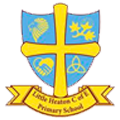Year 2 - Key Stage 1 2025 - 2026
Mrs Chaudhrey

Welcome to Year 2’s web page! We hope you enjoy reading this each term as it will help to keep you informed about what is happening in the class room.
Mrs Chaudhrey is the class teacher.
Year 2 is an exciting learning year, filled with lots of exciting learning challenges (especially science investigations) as we near the end of Key Stage 1 and prepare for the move to the Key Stage 2 curriculum.
In year 2 we encourage our children to continue to grow in confidence as learners and as role models and global citizens as we take our roles as role models for the children in Reception and Year 1 seriously (and with a smile).
We encourage all families to talk regularly to their child about the learning experiences they enjoy as well as the learning challenges. We value open communication at our school so please talk to the year 2 team about the fun and exciting opportunities you have engaged with at home or any questions you may have about how to support the areas of learning your child finds ‘more challenging.’ We encourage our children to be and feel confident being challenged especially through effective team work between home and school.
The National Standardised Assessments Tests (SATs) or ‘Secret Agent Tests’ as we refer to them occur within May and June each year during Year 2. If you have any questions regarding the expectations or skills to practise at home, please feel free to speak to the Year 2 team throughout the year.
Below are the year-end expectations for children in Year 2.
Reading
The pupil can:
• read accurately most words of two or more syllables
• read most words containing common suffixes
• read most common exception words.
In age-appropriate books, the pupil can:
• read most words accurately without overt sounding and blending, and sufficiently fluently to allow them to focus on their understanding rather than on decoding individual words
• sound out most unfamiliar words accurately, without undue hesitation.
In a book that they can already read fluently, the pupil can:
• check it makes sense to them, correcting any inaccurate reading
• answer questions and make some inferences
• explain what has happened so far in what they have read.
Writing
The pupil can, after discussion with the teacher:
• write simple, coherent narratives about personal experiences and those of others (real or fictional)
• write about real events, recording these simply and clearly
• demarcate most sentences in their writing with capital letters and full stops, and use question marks correctly when required
• use present and past tense mostly correctly and consistently
• use co-ordination (e.g. or / and / but) and some subordination (e.g. when / if / that / because) to join clauses
• segment spoken words into phonemes and represent these by graphemes, spelling many of these words correctly and making phonically-plausible attempts at others
• spell many common exception words
• form capital letters and digits of the correct size, orientation and relationship to one another and to lower-case letters
• use spacing between words that reflects the size of the letters.
Maths
The pupil can:
• read scales in divisions of ones, twos, fives and tens
• partition any two-digit number into different combinations of tens and ones, explaining their thinking verbally, in pictures or using apparatus
• add and subtract any 2 two-digit numbers using an efficient strategy, explaining their method verbally, in pictures or using apparatus (e.g. 48 + 35; 72 – 17)
• recall all number bonds to and within 10 and use these to reason with and calculate bonds to and within 20, recognising other associated additive relationships (e.g. If 7 + 3 = 10, then 17 + 3 = 20; if 7 – 3 = 4, then 17 – 3 = 14; leading to if 14 + 3 = 17, then 3 + 14 = 17, 17 – 14 = 3 and 17 – 3 = 14)
• recall multiplication and division facts for 2, 5 and 10 and use them to solve simple problems, demonstrating an understanding of commutativity as necessary
• identify 1/4, 1/3, 1/2, 2/4, 3/4, of a number or shape, and know that all parts must be equal parts of the whole
• use different coins to make the same amount
• read the time on a clock to the nearest 15 minutes
• name and describe properties of 2-D and 3-D shapes, including number of sides, vertices, edges, faces and lines of symmetry.

Files to Download
Year 2 - Key Stage 1: Children's Work items
There are no Children's Work items to display









